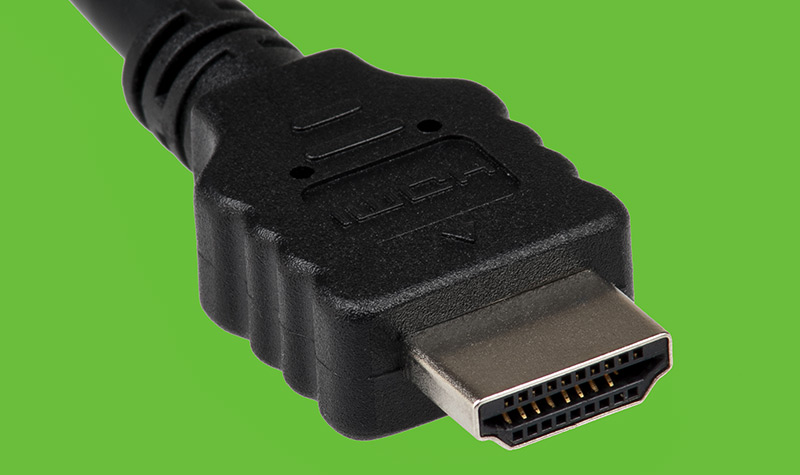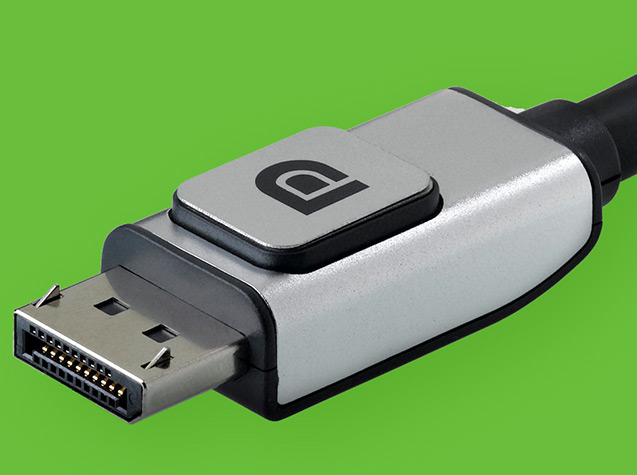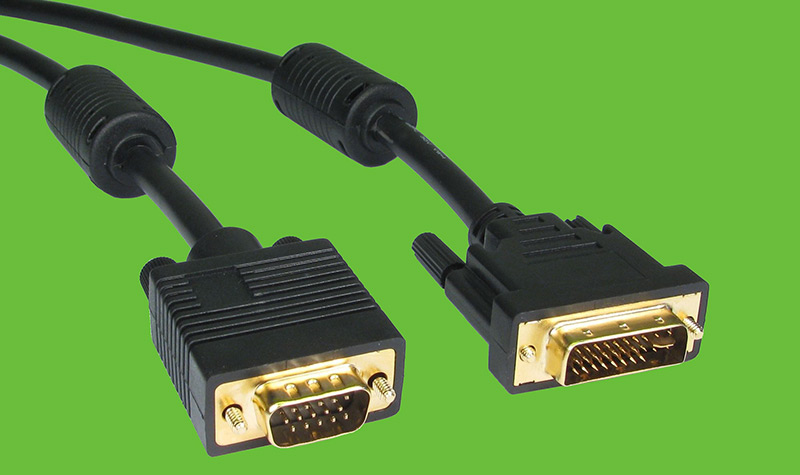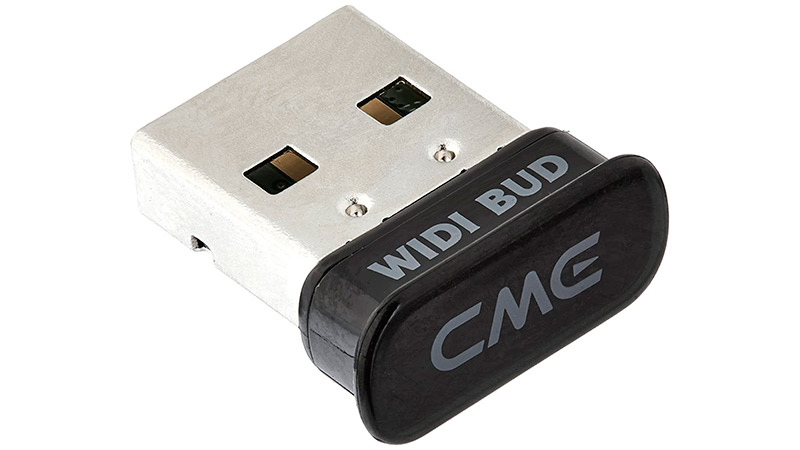
Index:
UPDATED ✅ HDMI and DisplayPort are two types of video connections. Do you want to know their differences? ⭐ ENTER HERE ⭐ and learn more
HDMI is a technology that was born in December 2012 by Philips, Sony, Panasonic, Toshiba and other major manufacturers in the electronics industry. It arises as a need for standardization of connectors and also of standards to be able to transmit with the least amount of cable possible high quality audio and video.
This generated a revolution in the industry, since they stopped using connectors that generated some complications for users and motivated to have the ease of always finding the right cable for connecting home devices.
In this article we will also show you what DisplayPort is and how it is different from HDMI. If you want to be an expert in electronics, you cannot miss this post.
What is HDMI and how many versions of this connection exist?

Its name derived from English means “High Definition Multimedia Interface”. It is a standardized video protocol that is currently used throughout the technology industry. It emerged to replace analog video standards, such as connectors RCA and the euroconnector.
HDMI is used to send high-quality video and digital audio through a single cable to a decoder. This modulates the data through a high-speed serial transmission technology called TMDS. It has a bandwidth of 10.2 Gb/s at 340 MHz. This data is sent uncompressed and, in the case of audio, can be transmitted in up to 8 channels.
Its connector, type A, has 19 PINs distributed symmetrically on its upper and lower sides. It can be used to connect a single DVI link. That is, to graphics cards and monitors of current computers. Since its creation, This technology has several versions. The first was developed at the end of the year of its creation (2002) with a transfer rate of up to 4.9 Gb/s, supporting 1080p at 60Hz video and 8 channels of 192 kHz audio with 24-bit audio.
the second version (HDMI1.1) it had the same features as the previous one, but DVD Audio support was added. In 2005 version 1.2 was released., in which support for One Bit Audio was added. While a year later it came to light the HDMI 1.3, with which the bandwidth became 340 MHz, generating a data transfer rate of up to 10.2 Gb/s. Support for DTS-HD and Dolby TrueHD was also added.
HDMI version 1.4 It is the one that revolutionizes this technology and generates important advances with respect to its previous models. This is because it incorporates the possibility of send 3D videos and changes to a resolution called “eXtended High Definition”, leaving aside the FullHD. Support for videos increased to 4096 × 2160 pixels. It begins to be used in public transport and automobiles. You can also send and receive data through a connection Ethernet coming to reach speeds up to 100Mb/s.
HDMI 2.0 is the next version released in the year 2013. It generates a speed rate of 18 Gb/s thanks to the increase in its bandwidth. incorporates up to 32 channels for audio files, thus generating a multidimensional sensation for the listener. Also, it supports audio files up to 1536kHz. As for the video is incorporated in the 21:9 aspect and recognizes a quality of 4K. In this way, it is possible to have a dynamic synchronization in the contents of streaming for audio and video.
In the first days of 2017, the latest available version was released, 2.1. This brings a higher bandwidth of up to 48 Gb/s, so it supports resolutions up to 10K. In addition, it regulates the lighting and color of a dynamic HDR video.
What is DisplayPort and how many versions of it are there?

This type of device was created to transmit video and audio data in digital form between the monitor and the computer. It was created in 2007 by the Video Electronic Standards Association. It currently has 4 channels to transmit videos of up to 4096 x 2160 pixels, with a transfer rate of 16.2, 1.27 or up to 33.4 Gb/s. This means that it can be transmitted with the same cable to several screens at the same time.dividing the image between all these.
Audio can be sent by up to 8 channels of 192 kHz compression. It has a 2-way line, whose speed can reach up to 720 Mb/s. It is also used for data transmission.
As a security measure, features AMD DisplayPort Content Protection copy protection, thanks to a 128-bit Rinjdael-type block cipher. In addition, you can control the proximity of the emitter and receiver. In this way, it is possible to protect the data against unauthorized users who can find the information remotely.
It has 20 PINs, the maximum length can reach 15 meters for the transmission of videos of up to 1080 pixels. Its commercialization is free of licenses and it is currently supported by Intel for the development of this technology in computer equipment. Other companies that provide their support are: Hewlett-Packard, Lenovo, Apple, and Samsung.
What are the main differences between HDMI and DisplayPort connections?
Although both technologies allow the transmission of multi-channel digital audio and high-quality image, the DisplayPort sends the image data packets up to 4 channels with a quality of 4096 x 2160 pixels and at a speed of up to 33.4 Gb/s.
Meanwhile he HDMI send the files single channel video, but the transfer rate is 48 Gb/s. In addition, the resolution it supports is up to 10K in 21:9 format. The audio channels that the latest version has are 32 channels to send this information. The HDMI has 19 connectors, one less than the DisplayPort and does not have a fastening system so it won’t unplug when connected to a device. Thing that the other connector more than meets, since it incorporates 2 tabs for a correct fastening.
The size of the DisplayPort connectors is 2 versions. a standard (for all monitors) and another mini, which is intended for some Apple laptops. While the HDMI has 3 versions, the standard which is used in the Smart or in blu ray, the mini or type C, which is used in cameras and finally the size of a micro HDMIwhich is very common to see on mobile.
HDMI vs DisplayPort Which one is better according to its use?
These two technologies can actually coexist without any problem. This is because they manage to achieve the same functions and be more efficient one than the other, according to the use that is given. Due to this, we present you what is the best alternative that you can choose in different tasks.
To watch series and movies
When you want to enjoy a series or movie you will have to choose the HDMI. This is because there are very few televisions that support DisplayPort and they stopped being produced a few years ago due to the large screen size they featured and that they worked with G-Sync or HDR and GeForce technology. NOW.
To play video games
If you are a fan of online video games, you will need to have compatibility with NVIDIA and AMD graphics cards so that they can work perfectly and you can freely choose the game you want. In this case, the ideal would be to choose display port since it supports FreeSync and G-Sync, both technologies available for these graphics cards. This is because HDMI is not yet supported by NVIDIA.
What alternatives to HDMI and DisplayPort exist today and what is the future?

There are other alternatives you can choose from if you don’t want to lean towards HDMI or DisplayPort. We will show you what are those options that you have to replace the technologies that we are analyzing.
DVI
It is one of the first connectors that were most famous in computing. His name comes from Digital Visual Interface and is used for transmit digital or analog video. This is a distinctive feature of this technology, since it is the only one that supports both formats. Data signals with a bandwidth of up to 7.92Gb/s.
The video signal that can be transmitted is a maximum of 2560 × 1600 pixels at 60 Hz digitally. Whereas, with an analog format, your RGB transmission is -3dB at 400 MHz. It has 29 PINs in its DVI M1-DA version. It has the peculiarity that, through the adapter, can be rewired an HDMI technology.
vga
This video standard called Video Graphics Arraywas created in 1987 by IBM for the transmission of images in analog form whose resolution is 640 × 480 pixels at 70 Hz. It has a 15-PIN connector that transmitted images between a range of 16 and 256 colors. Currently its use is zero.
WiDi

What we have seen so far are standards that are used in video, but that belong to the past. Now we will deal with the present and the technological future for this type of tool. We will start with WiDi that can transmit images without the need for cables.
This technology was developed in the year 2010 by Intel. His name is “Wireless Display” Y uses the frequencies of 2.4 GHz and 5 GHz to 60 GHz, so any modern router can accommodate this video stream. But you must bear in mind that WiFi and this technology do not necessarily have to be compatible.
The transfer speed is up to 28 Gbps in 4K quality and at a distance of no more than 10 meters. Its use is quite simple, since you will need to install the WiDi software on an Intel computer and then connect an adapter to the TV. Then you must choose the input on the Smart where you have this transmission device connected.
On the transmitting device, you must choose to transmit using the “Add a wireless display”.
Wireless HDMI
This technology, which is used to transmit audio and video, it does it independently of WiFi and works at a frequency of 5 GHz. Its operation is simpler than WiDi, since here you will not have to install any extra program, you only have to connect one device on the big screen and another on the transmitter.
It can transmit at a distance of up to 15 meters, but the result may have interference. Therefore, the ideal distance is between 2 and 5 meters, with which the latency is reduced to almost 0. In this way, it appears that you can watch movies without any problems, since you can have a delay that will not influence the development of the content. Instead, you will not be able to play online.
Hardware